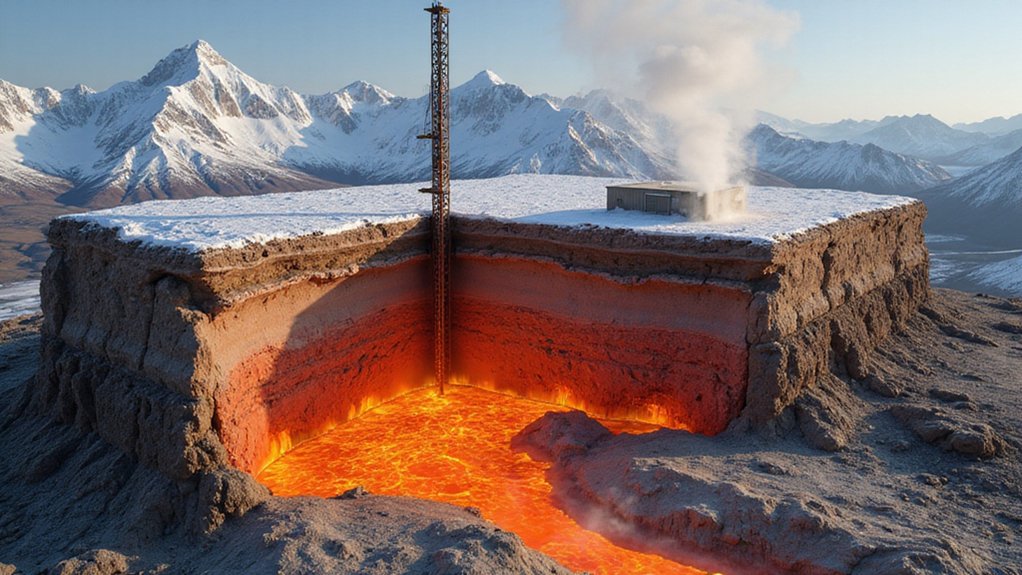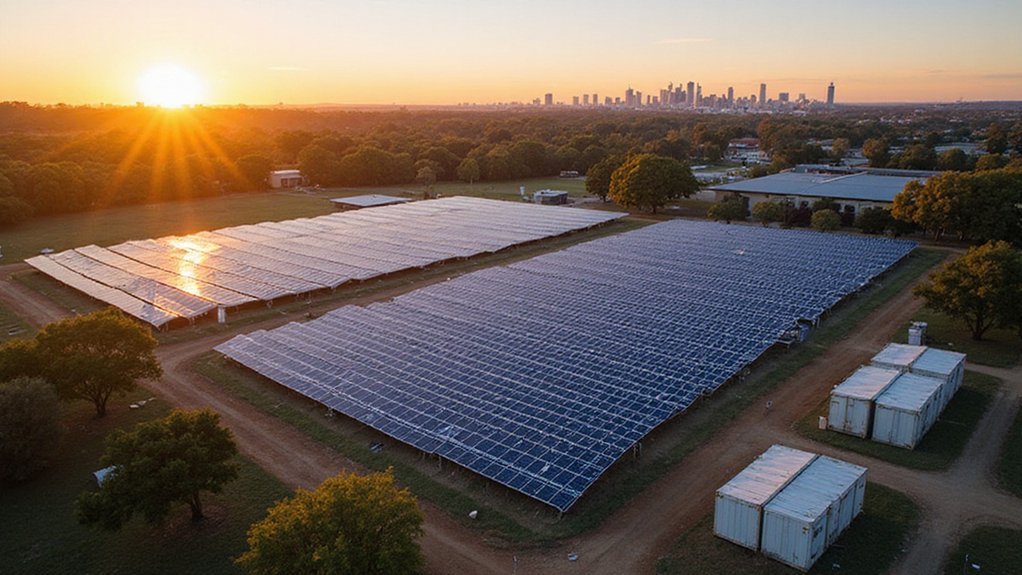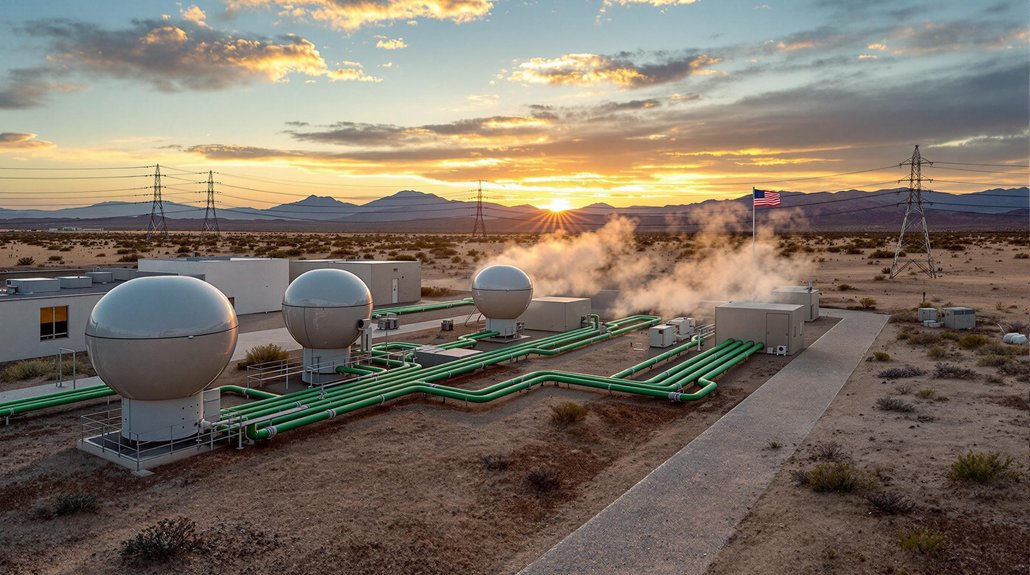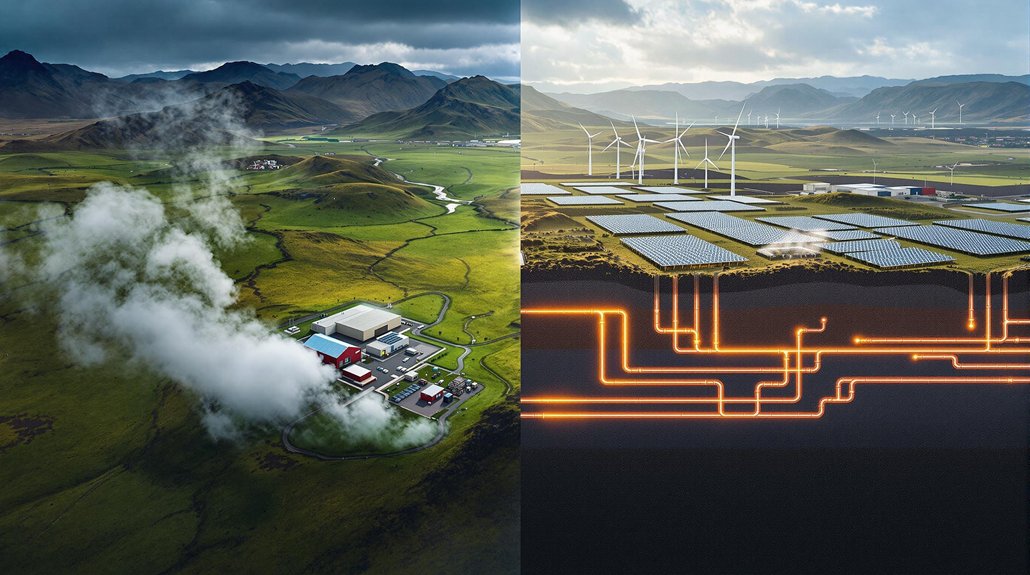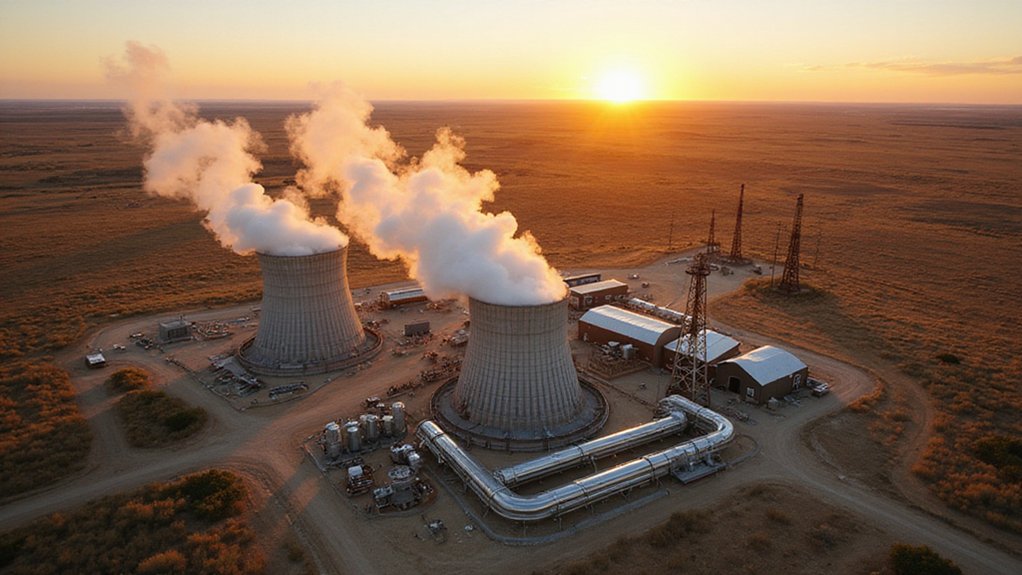Geothermal energy could potentially eliminate our dependence on fossil fuels by tapping Earth’s vast internal heat. Modern drilling technologies, especially Enhanced Geothermal Systems, allow access to heat miles beneath the surface in virtually any location. Despite providing reliable 24/7 power, geothermal remains underutilized compared to other renewables. With advancements in drilling technology and stronger policy support, this abundant energy source could supply humanity’s needs for millions of years. The future possibilities await beneath our feet.
While renewable energy often brings solar panels and wind turbines to mind, a vast energy source lies quietly beneath our feet. Earth’s internal heat reservoir is massive, originating from both planetary formation and ongoing radioactive decay. Scientists estimate that just 0.1% of this heat could meet global energy needs for two million years.
Unlike solar or wind power, geothermal energy works 24/7, regardless of weather conditions. This makes it uniquely valuable as a baseload power source that can provide constant electricity. With an impressive 95% availability factor, geothermal plants deliver reliable power without interruption from external factors. The Earth naturally loses about 47 terawatts of heat annually through conduction, volcanic activity, and radiation to the atmosphere.
Geothermal energy delivers reliable power around the clock, tapping into Earth’s constant 47-terawatt heat flow when other renewables falter.
Today, geothermal plants mainly operate in areas where heat is naturally close to the surface, like Iceland or California. These regions often sit along the “Ring of Fire,” where tectonic plates meet. But new technology could change this limitation.
Enhanced Geothermal Systems (EGS) represent a breakthrough approach. These systems can access heat from deep, dry rock layers that lack natural permeability. By drilling several miles down and creating artificial fractures, water can be circulated to capture heat from previously untapped sources.
Despite its potential, geothermal remains underutilized globally. It receives less policy support and funding compared to wind and solar energy. In the United States, geothermal supplied only 2% of renewable energy in 2021. The International Energy Agency has highlighted geothermal’s critical future role in the global energy mix.
While extracting more geothermal energy might sound concerning, human use would only increase Earth’s natural cooling rate by about 10% even if it supplied all global energy needs. This explains why geothermal is widely classified as renewable, since the Earth’s heat loss through natural processes far exceeds what humans could extract. Local depletion can occur if extraction exceeds replenishment, but proper management through fluid re-injection helps maintain reservoir pressure.
Experts agree that wider adoption depends largely on advances in drilling technology and stronger policy incentives. As these improve, geothermal energy could expand beyond traditional hotspots, potentially reaching any location on Earth where we’re willing to drill deep enough.
References
- https://profession.americangeosciences.org/society/intersections/faq/why-geothermal-energy-renewable-resource-can-it-be-depleted/
- https://adi-analytics.com/2022/10/14/the-forgotten-renewable-a-review-of-geothermal-energy/
- https://www.smu.edu/dedman/academics/departments/earth-sciences/research/geothermallab/labresearch/heatflowandheatloss
- https://spheresofinfluence.ca/geothermal-energy-can-the-forgotten-renewable-make-its-mark/
- https://earthscience.stackexchange.com/questions/428/could-the-earths-core-lose-its-heat
